Clinical outcomes of the omicron variant compared with previous SARS-CoV-2 variants; meta-analysis of current reports
Mohsen Karbalaei, Masoud Keikha
Abstract
Key Words: SARS-СoV-2; СOVID-19; Omicron; Infectious disease
lNTRODUCTlON
Coronavirus disease 2019 (COVID-19) is a global pandemic that first emerged from Wuhan, China in December 2019. According to the World Health Organization (WHO), so far > 378 million cases, as well as 5.67 million deaths have occurred due to severe acute respiratory syndrome coronavirus 2 (SARSCoV-2) infection[1]. On 24 November 2021, the Network for Genomics Surveillance in South Africa (NGS-SA) reported a new variant of this virus from Gauteng Province, named omicron (B.1.1.529); the new variant was confirmed by WHO on 25 November 2021[2,3].
The omicron variant rapidly replaced the previous variants in South Africa and spread to other countries, so it quickly became a dominant variant. In the USA, approximately 95% of all new cases of COVID-19 were diagnosed as being caused by the omicron variant by January 2022[4,5].
The genome of this variant contains 26-32 mutations in the spike gene as well as 45-52 amino acid substitutions. these mutations are associated with increases in viral characteristics such as transmissibility, immune escape, and S gene target failure (SGTF). SGTF is due to the 69 to 70 deletion in the S gene of B.1.1.7[6-8]. Early studies have shown the inefficacy of current vaccines (vaccination schemes and booster doses) and the higher rate of re-infection with the omicron variant[9,10]. Based on animal model findings, the severity of symptoms as well as the viral load of the omicron variant were lower compared to the previously reported variants of SARS-CoV-2[11,12]. Clinical reports from Scotland, England, Canada, and the USA have also confirmed animal experiments[13-16]. However, the fourth global wave of COVID-19 caused by the omicron variant was not associated with increased hospitalization or death in comparison with previous SARS-CoV-2 variants[17].
Understanding the clinical characteristics, susceptibility factors, and immune response against the new SARS-CoV-2 variants could be useful strategies in managing these viruses and development of novel treatment options. In this study, we evaluated the clinical severity of SARS-CoV-2 omicron variant compared with previous variants.
MATERlALS AND METHODS
We searched global databases such as ISI Web of Science, PubMed, Scopus, MedRxiv, and Reference Citation Analysis (https://www.referencecitationanalysis.com/) using MeSH keywords such as “Omicron”, “COVID-19”, “SARS-CoV-2”, “Disease severity”, “Variant of concern”, “ICU”, “Intensive care unit”, and “fourth wave”. We retrieved all potential studies related to the clinical severity of SARSCoV-2 omicron variant regardless of language and publication date. All eligible documents were carefully screened; required data including mean age, immunization status, mortality rate, intensive care unit (ICU) admission, length of hospitalization, and mechanical ventilation are summarized in Table 1. We also reviewed the bibliography of documents to avoid missing relevant articles. Finally, the severity of COVID-19 caused by omicron compared with previous SARS-CoV-2 variants was evaluated using odds ratio (OR) and 95% confidence interval (CI). We used a random-effect size due to the presence of significant heterogeneity (I2index and CochranePvalue test). Data were pooled using Comprehensive Meta-Analysis software version 2.2 (Biostat, Englewood, NJ, USA).
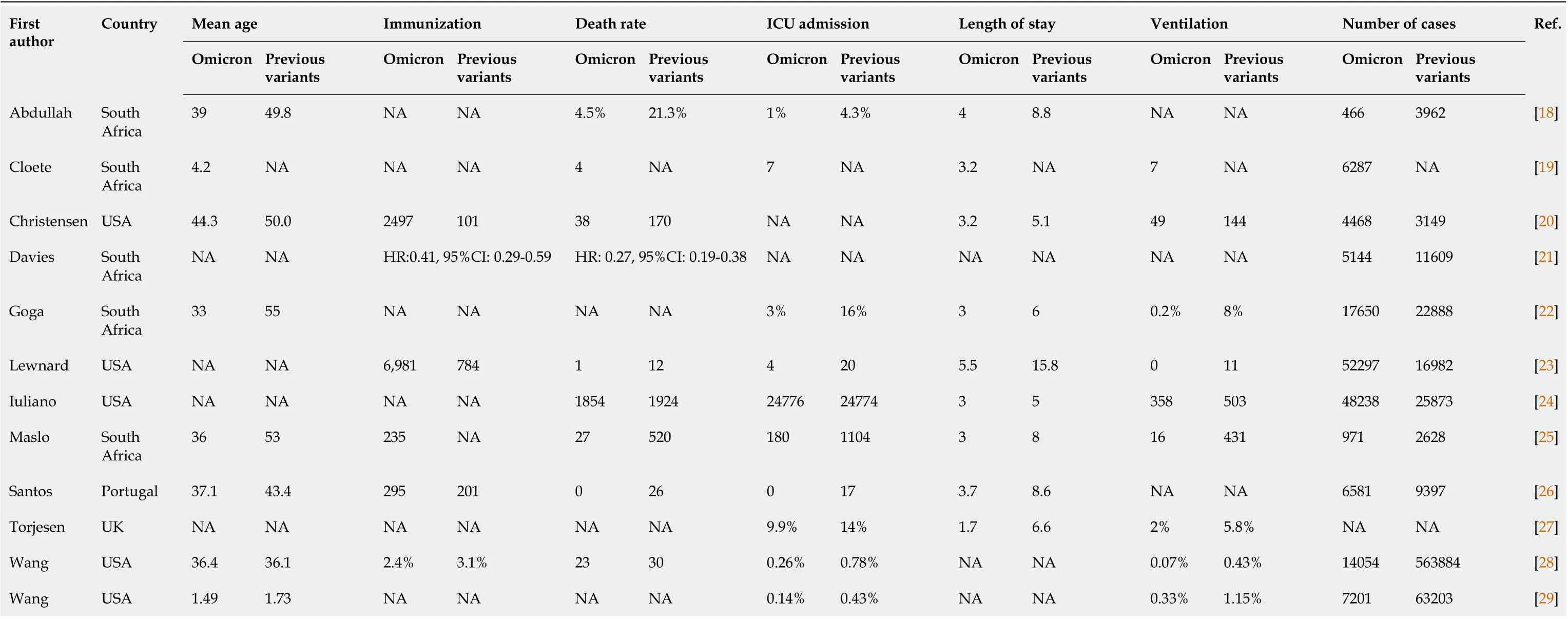
Table 1 Characteristics of included studies
RESULTS
A total of 12 studies investigated the clinical outcomes of infection with SARS-CoV-2 omicron variant compared with other variants such as alpha, beta and delta (Figure 1). Eligible studies were performed in South Africa, USA, Portugal and UK from 2021 to 2022[18-29]. We pooled the data of 887 132 cases with positive PCR test for SARS-CoV-2, including 163 457 cases positive for omicron variant, as well as 723 675 cases positive for other variants.
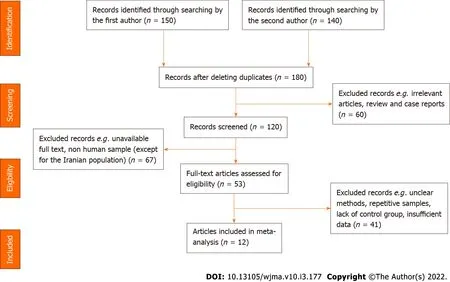
Figure 1 Flowchart of literature search and study selection process.
The mean age of patients infected with omicron variant was 28.93 ± 15 years. The frequency of events such as ICU admission, need for mechanical ventilation, and death rate for omicron variant was 0.8% (95% CI: 0.2%-3.7%;I2: 99.89;P= 0.01; Egger’sP= 0.01; Begg’sP= 0.29), 0.2% (95% CI: 0.1%-0.5%;I2: 95.75;P= 0.01; Egger’sP= 0.16; Begg’sP= 0.26), and 0.4% (95% CI: 0.1%-1.0%;I2: 98.47;P= 0.01; Egger’sP= 0.01; Begg’sP= 0.45), respectively. The average length of hospitalization for omicron was significantly less than for other variants (3.36 ± 1 dvs. 7.98 ± 3 d;P< 0.05). The incidence of omicron infection among fully vaccinated individuals was 12.9% (95% CI: 5%-27%;I2: 99.89;P= 0.01; Egger’sP= 0.22; Begg’sP= 0.40). the current findings revealed that the severity of infections caused by omicron was less than for previous infections caused by alpha, beta, and delta variants. The current findings are consistent with similar reports[30,31]. In comparing the fourth wave of COVID-19 caused by the omicron variant with previous waves, it should be said that the mean age for patients infected with omicron was ~13 years (28.93 ± 15 years), which was less than that for other variants (41.29 ± 17 years). There was a significant reduction in ICU admission (OR: 0.18; 95% CI: 0.094-0.37;P= 0.01;I2: 99.05;P= 0.01; Egger’sP= 0.2; Begg’sPvalue: 0.07) (Figure 2). Our results suggested a significant reduction in the need for mechanical ventilation (OR: 0.135; 95% CI: 0.05-0.31;P= 0.01;I2: 97.24;P= 0.01; Egger’sP= 0.12; Begg’sP= 0.26) among omicron cases (Figure 3). The mortality rate also declined among patients infected with omicron variant (OR: 0.17; 95% CI: 0.06-0.46;P= 0.01;I2: 98.32;P= 0.01; Egger’sP= 0.44; Begg’sP= 0.71) compared with previous variants (Figure 4).
DlSCUSSlON
We found that the severity of COVID-19 caused by the SARS-CoV-2 omicron variant was significantly less than for previous variants; however, there was significant heterogeneity that could be due to differences in several factors such as study design, geographical region, time for assessment of clinical outcomes, and diverse conditions of included cases; publication bias was also significant. Recently, Zhaoet al[32], showed that the omicron variant is less dependent on the TMPRSS2-mediated entry pathway, which leads to less-efficient replication and decreased viral load within the lungs. In addition, the omicron variant is more susceptible to interferons than other variants are, especially the delta variant[33]. Similar evidence could be a reasonable explanation for the lower severity of COVID-19 with the omicron variant, as confirmed by numerous observational studies[15].
The omicron variant nucleotide sequence has several mutations, especially 32 single substitutions in the spike protein that cause resistance to neutralizing antibodies, as well as inefficiency of current vaccines[34-36]. We revealed that omicron variant causes less severity of COVID-19 than previous variants; however, heterogeneity and publication bias were significant in our estimations (Figure 5). Further studies need to confirm the present findings.
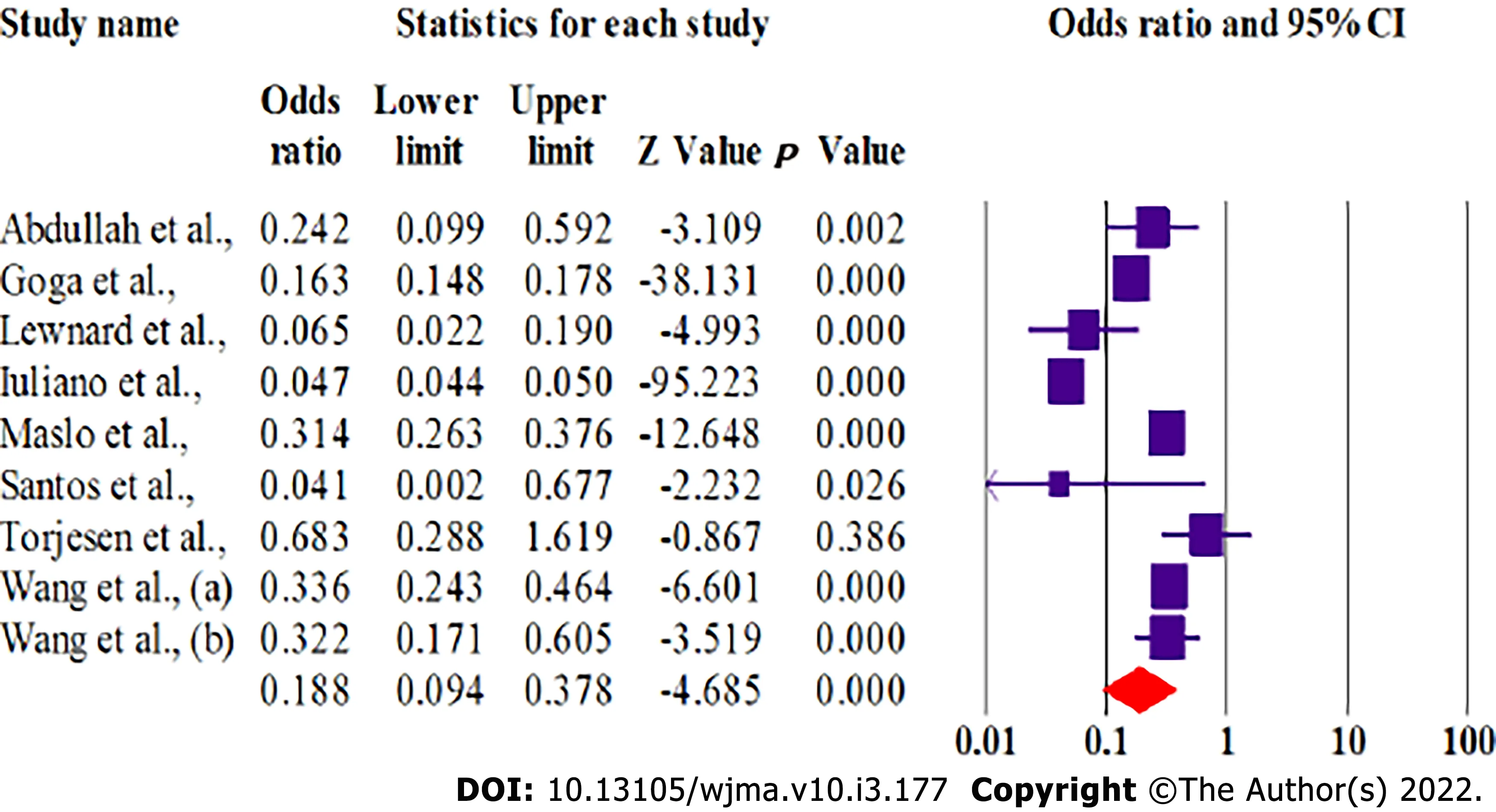
Figure 2 Forest plot of the meta-analysis on intensive care unit admission for patients infected with severe acute respiratory syndrome coronavirus 2 omicron variant.

Figure 3 Forest plot of the meta-analysis for need for mechanical ventilation in patients infected with severe acute respiratory syndrome coronavirus 2 omicron variant.
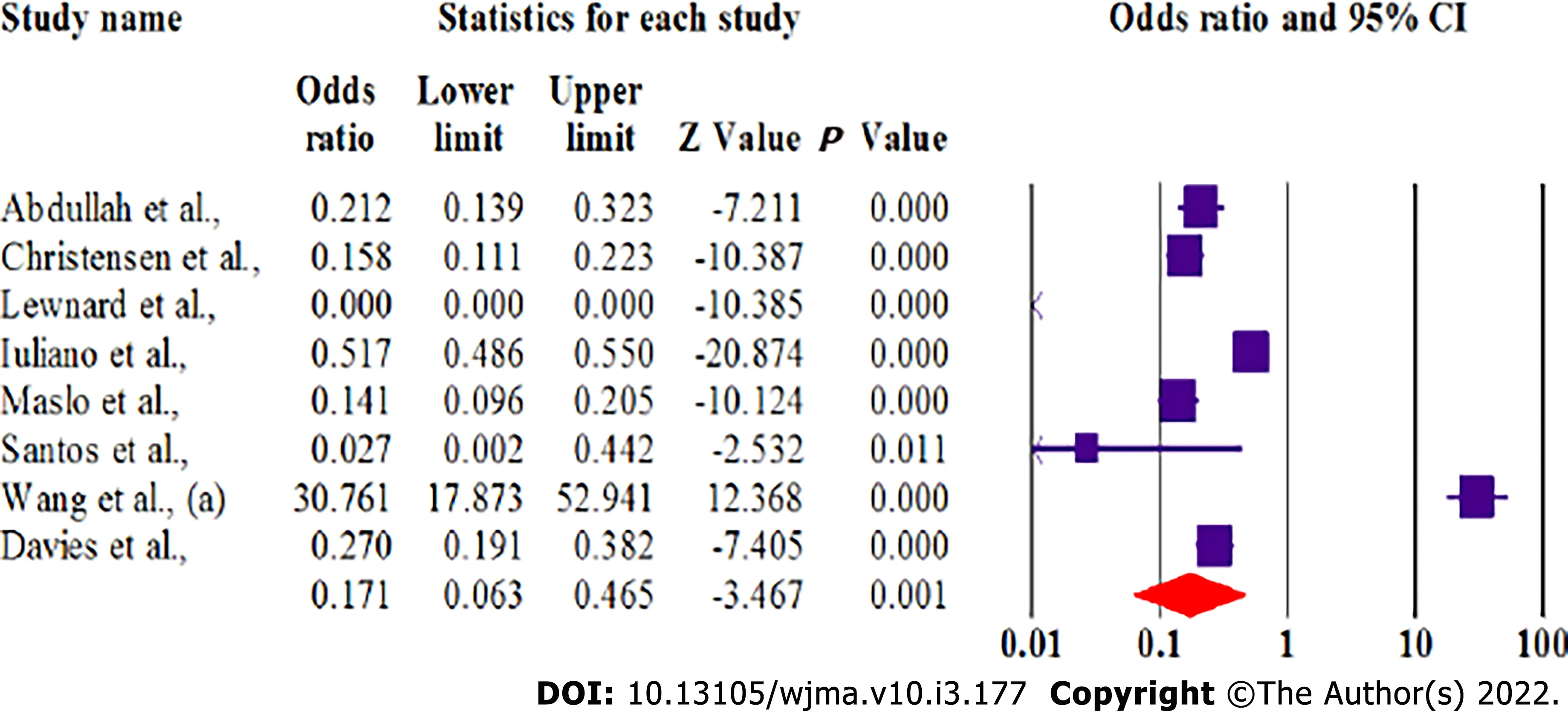
Figure 4 Forest plot of meta-analysis of risk of mortality in patients infected with severe acute respiratory syndrome coronavirus 2 omicron variant.
CONCLUSlON
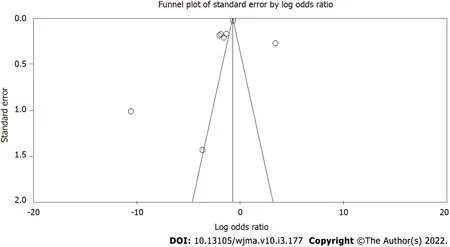
Figure 5 Funnel plot of meta-analysis of disease severity of patients intfected with severe acute respiratory syndrome coronavirus 2 omicron variant compared with previous variants.
A new global increase in COVID-19 has been accompanied by the emergence of the SARS-CoV-2 omicron variant that is associated with less disease severity, as well as fewer ICU admissions, shorter hospitalization, and lower mortality rate. Nonetheless, there is limited information about the effect of omicron on children, pregnant women, and immunodeficient individuals. Overall, omicron has been considered as the most contagious SARS-CoV-2 variant that affects children and young adults more than other groups. Continuation of the current situation can have deadly consequences for these age groups.
ARTlCLE HlGHLlGHTS
Research background
Omicron (B.1.1.529) is a new variant of concern of severe acute respiratory syndrome coronavirus 2 (SARS-CoV-2); however, there is no comprehensive analysis regarding clinical features, disease severity, and clinical outcomes of infection with this variant.
Research motivation
There is insufficient evidence regarding clinical characteristics, standard therapeutic regimen, and efficacy of currently available vaccines against the omicron variant.
Research objectives
This study was a comprehensive review and statistical analysis to compare the clinical characteristics of infection with the omicron and previous variants.
Research methods
We searched major international databases consisting ISI Web of Science, PubMed, Scopus, and MedRxiv to collect the potential relevant documents. Finally, clinical features,e.g., death rate, intensive care unit (ICU) admission, length of hospitalization, and need for mechanical ventilation of patients infected with omicron variant compared with previous variants, were assessed.
Research results
Twelve articles met our criteria. These studies investigated the clinical outcomes of infection with SARSCoV-2 omicron variant compared with other variants such as alpha, beta and delta. Our results suggested that ICU admission, need for mechanical ventilation, and death rate were significantly lower for omicron than previous variants. In addition, the average length of hospitalization during the omicron wave was significantly shorter than for other variants.
Research conclusions
The infectivity of the omicron variant was much higher than for previous variants due to the presence of several mutations, particularly in the spike protein. However, disease severity was mild to moderate disease compared with previous variants.
Research perspectives
We revealed that the disease severity of infection with omicron was lower than for previous variants. However, this variant was more contagious. Nevertheless, further investigation with larger samples is needed to confirm the present findings.
FOOTNOTES
Author contributions:Keikha M contribute in design of study, study conceptual, literature search, writhing the draft; Karbalaei M revision the draft and manuscript editing; all authors agree with publish in this journal.
Conflict-of-interest statement:All the authors declare that they have no conflict of interest.
PRlSMA 2009 Checklist statement:This study was conducted according to PRISMA 2009 Checklist statement.
Open-Access:This article is an open-access article that was selected by an in-house editor and fully peer-reviewed by external reviewers. It is distributed in accordance with the Creative Commons Attribution NonCommercial (CC BYNC 4.0) license, which permits others to distribute, remix, adapt, build upon this work non-commercially, and license their derivative works on different terms, provided the original work is properly cited and the use is noncommercial. See: https://creativecommons.org/Licenses/by-nc/4.0/
Country/Territory of origin:Iran
ORClD number:Мohsen Karbalaei 0000-0001-9899-2885; Мasoud Keikha 0000-0003-1208-8479.
S-Editor:Liu JH
L-Editor:Kerr C
P-Editor:Liu JH
 World Journal of Meta-Analysis2022年3期
World Journal of Meta-Analysis2022年3期
- World Journal of Meta-Analysis的其它文章
- Difference in incidence of developing hepatocellular carcinoma between hepatitis B virus-and hepatitis C virus-infected patients
- ls cellular therapy beneficial in management of rotator cuff tears? Meta-analysis of comparative clinical studies
- Evidence analysis on the utilization of platelet-rich plasma as an adjuvant in the repair of rotator cuff tears
- Review with meta-analysis relating North American, European and Japanese snus or smokeless tobacco use to major smoking-related diseases
- Rare post-endoscopic retrograde cholangiopancreatography complications: Can we avoid them?
- Viral hepatitis: A narrative review of hepatitis A-E
